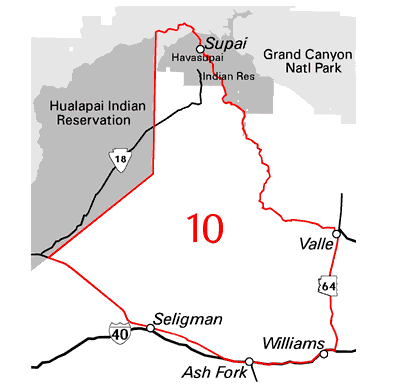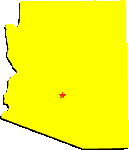Even friends of mine, who ought to know better, are in favor of making the Arizona late bowhunt a draw hunt. When I ask them why, the typical response is, “everything is getting overhunted”. When “reasonable people” view mule deer hunting this way, I wonder why, as hunters, we have become so willing to attack the symptoms vs. the problem. By applying band-aids to the symptoms, the real problem is obscured. In our self-centered desire for presumed “better hunting”, we cut off our nose to spite our face.
We are witnessing the last of a dying breed – so to speak. There aren’t very many mule deer hunters left who know how good it could be, having seen how good it once was. If the present trend continues, there will be no over-the-counter mule deer tags available anywhere. To me, this slow cancer of declining opportunity feels like a loss of freedom. I have told my friends that once it is taken away, it will not be given back.
Since I, apparently, possess one of the last remaining over-the-counter Arizona mule deer archery tags, I decided to put it to use on the “opening day” of the unit 10 late bowhunt. December 14, 2007, was my first attempt at this hunt, and may very well be my last.
There was a fairly fresh blanket of snow over much of the unit, so I decided to find deer by looking for tracks. I especially like to find tracks that are so fresh that the deer are still standing in them, but I didn’t find any of those. The muleys in this area don’t need to migrate, but they do anyway. Snow is a great blessing for the few remaining deer because they can go wherever they please and have access to what would otherwise be a scant supply of water in this drought-ridden state.
I spent most of the day behind the steering wheel, and I covered a lot of ground. High, low, north, east, west, and south. Mid morning I found a likely looking spot with fresh deer tracks crossing the road, and decided to set out on foot. I hiked for 3 hours. The only live animal I saw, not just while hiking, but for the whole day, was a fox.
Some say that tracks in the snow tell the story. Rabbit tracks were, by far, most abundant. I cut hundreds of them. Coyote tracks were next in abundance. There were about 30 sets of these. There were three deer tracks, and one lion track. The lion was fairly large, having a 4 inch wide foot print. The lion had been hunting from the ledges overlooking a sidehill. I used a similar strategy.
If I were to judge the number of animals by the number of tracks, then it is absolutely amazing that there are any deer left at all. For every 10 deer there would be 3 lions and 10 coyotes. I don’t know how the rabbits survive either.
I did not see one live deer all day. Most of the hunters were driving the roads. Most were congregated around the areas where there were deer tracks. In a couple of spots, there were migration tracks that looked somewhat like a herd of sheep had passed through. Over the rest of this very large unit, tracks were very few and far between.
Now, after a hunt like that, wouldn’t it be easy for me to say that the unit is overhunted and that it ought to be a draw? It would be, if I were ill-informed. But, I realize that the problem is “not enough deer”, and the symptoms are: poor hunting experience, and overcrowding around where the few deer remain. The solution is to have more deer, not less hunters. And, if we were to go back in time, we would find that, once upon a time, there were more deer, more hunters, more opportunity, and more success. What is the solution, you ask? Less predators – way less. Our wildlife agencies have taken to managing hunters for the predators, instead of the other way around.
As far as I can tell, with the possible exeption of water, there is ample habitat for many more deer, both in quantity and quality. The rabbits and the elk are making it possible for the predators to avoid starvation from the lack of deer or there would be no deer and no predators.
I had a lion tag in my pocket. If I could have shot ( or shot at ) a lion, coyote, or fox – I would have done so. The fox, that I saw, didn’t hang around long enough for a shot or he may have had an arrow enema.
Do your part. Kill predators. Resist decisions that reduce opportunity for hunters.

 All of these people are crowding into an area where there are a few deer left and where they can get a tag while the rest of Arizona has few muleys and sparse bowhunters. The North Kaibab could support 10 times the mule deer that are currently available there. I, and everyone I spoke to, saw and heard plenty of coyotes. I know there are many lions there by the number of tracks I have seen.
All of these people are crowding into an area where there are a few deer left and where they can get a tag while the rest of Arizona has few muleys and sparse bowhunters. The North Kaibab could support 10 times the mule deer that are currently available there. I, and everyone I spoke to, saw and heard plenty of coyotes. I know there are many lions there by the number of tracks I have seen. here is a comment made by a DWR representative at a Utah Dedicated Hunter meeting in Ogden, Utah – regarding hunter ethics: “if you go into the field expecting to harvest an animal, you are unethical“.
here is a comment made by a DWR representative at a Utah Dedicated Hunter meeting in Ogden, Utah – regarding hunter ethics: “if you go into the field expecting to harvest an animal, you are unethical“.
